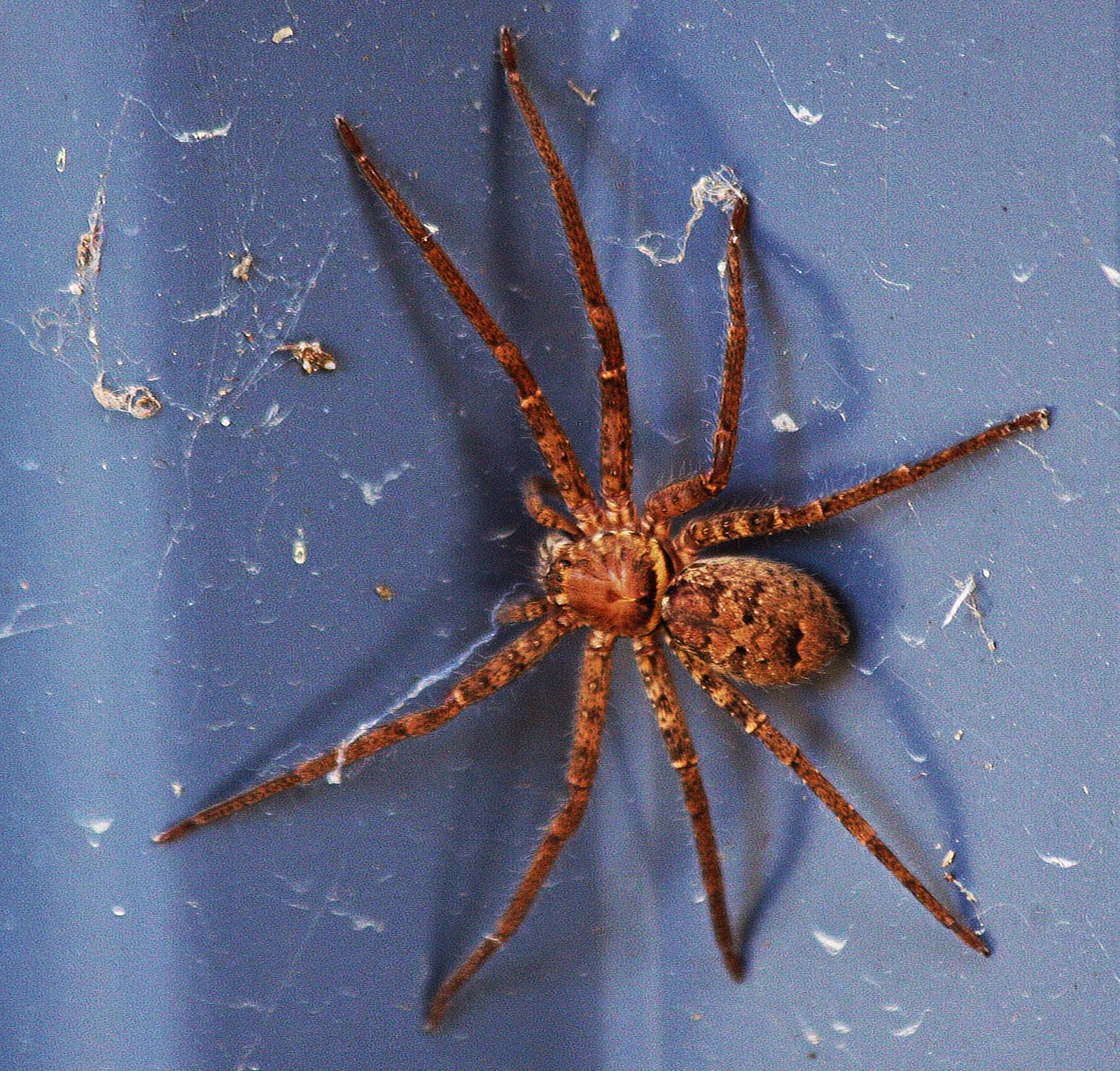My interest in birds still dominates, but partly due to the Mount Tamborine Wildlife Pics Facebook page I have started taking photographs of other things, and I'm sure you will have noticed Dragonflies and Butterflies in previous posts, but today it's spiders! Living in the bush you have to get used to spiders, they are everywhere, and they love to set up home around the house and so I have a constant war with them, but, when you stop and take notice of them some are quite stunning (and yes, some are also very creepy!)
 |
| St Andrews Cross Spider |
The St Andrews Cross Spider is commonplace and quite colourful. I'm unsure as to whether they've named the spider because of the way it sits, or because of its web which commonly sports a cross woven slightly thicker than the rest of the web. Two 'spines' of the crossed web can be seen here at 5 o'clock and 11 o'clock.
 |
| Jewelled Spider |
 |
| Jewelled Spider |
Moving into the creepier range is the Grey Huntsman that can grow to the size of your hand and is common in the bush around these parts. Fortunately it isn't a web builder, it's a rover, and despite the size is quite timid.
 |
| Grey Hunstman |
The Brown Huntsman can grow to a similar size and hunts across ceilings and walls, but he's a lot more aggressive and a ready biter.
 |
| Brown Huntsman |
The Golden Orb-weaver Spider is a biggie, growing to palm size and building webs of over a metre in diameter and these are strong, strong enough to catch small birds such as Silvereyes. They are very common in the bush and fortunately, their golden webs are fairly easy to see.
 |
| Golden Orb-weaver |
 |
| The ducklings first appeared covered in stripes. |
 |
| It wouldn't be for another three weeks that their plumage began to change. |
 |
| Their parents were very attentive. |
 |
| Which was good as occasionally the ducklings could be quite noisy. |
 |
| I just love 'em! |
The ducks are the only ones with young at this time of the year, the Red-necked Wallabies are aslo carrying young Joeys. Not big enough to be bouncing around yet, but certainly enjoying a chance to stick their heads out of the pouches and start exploring the world.
 |
| Red-necked Wallaby and Joey. |
 |
| Another (possibly the same) Mum and her joey. |
And on to the birds....
Regulars (seen at least 5 days in the week)
Australian Magpie
Bar-shouldered Dove
Bronzewing
Brown Honeyeater
 |
| Brown Honeyeater in the Grevilleas. |
Double-barred Finch
 |
| Double-barred Finch at a feeder |
Galah
Noisy Friarbird
Pacific Black Duck
Peaceful Dove
Plumed Whistling Duck
Rainbow Lorikeet
 |
| Rainbow Lorikeets over the feeder. |
Spangled Drongo
 |
| Juvenile Spangled Drongo |
Striated Pardalote
 |
| Striated Pardalote |
Torresian Crow
Welcome Swallow
White-throated Gerygone
White-throated Honeyeater
 |
| A family of White-throated Honeyeaters. |
Yellow-faced Honeyeater
Black-faced Cuckoo Shrike
 |
| Black-faced Cuckoo Shrike |
Black-faced Monarch
 |
| Juvenile Black-faced Monarch. |
Grey Shrike Thrush
King Parrot
Laughing Kookaburra
Leaden Flycatcher
 |
| Female Leaden Flycatcher |
Little Corella
Little Friarbird
 |
| Little Friarbird in a Wattle. |
Noisy Miner
Pale Headed Rosella
Pied Currawong
Rainbow Bee Eater
 |
| Rainbow Bee Eaters enjoying the late afternoon sun. |
Rufous Whistler
 |
| Female Rufous Whistler |
Uncommon (Seen two to five times during the month)
Blue-faced Honeyeater
 |
| Blue-faced Honeyeater in the Robyn Gordon Grevillea. |
Brown Cuckoo Dove
Collared Sparrowhawk
 |
| Collared Sparrowhawk takes wing. |
Eastern Yellow Robin
Forest Kingfisher
Grey Butcherbird
Magpie Lark
Olive-backed Oriole
Pied Butcherbird
Red-backed Fairy Wren
Red-browed Finch
White-bellied Cuckoo Shrike
White-throated Treecreeper
Willie Wagtail
Yellow-rumped Thornbill
Yellow-tailed Black Cockatoo
Rare (Seen only once)
Australian Ibis
 |
| Australian Ibis in a large gum tree. |
Azure Kingfisher
Brown Goshawk
Cicadabird
Crested Pigeon
Dollarbird
Eastern Whipbird
Grey Shrike Thrush
Lewins Honeyeater
Magpie Lark
Masked Plover
Rufous Fantail
Scaly-breasted Lorikeet
White-faced Heron
Wedge-tailed Eagle
White-headed Pigeon
Which is 63-species, down two species from 2014, but up eleven from 2013. The noticeable absence are the Wood Ducks that where here throughout March in previous years, but I suspect that they've been displaced by the Plumed Whistling Ducks.
See you next month. Cheers.

No comments:
Post a Comment